Related Research Articles
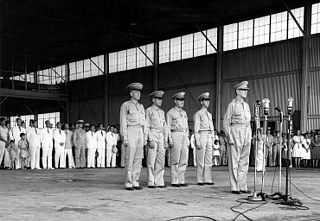
United States Army Forces in the Far East (USAFFE) was a military formation of the United States Army active from 1941 to 1946. The new command's headquarters was created on 26 July 1941, at No. 1, Calle Victoria, Manila, Luzon, the Philippines, with General Douglas MacArthur as commander. The Chief of Staff was Brigadier General Richard K. Sutherland and the Deputy Chief of Staff was Lieutenant Colonel Richard J. Marshall. The core of this command was drawn from the Office of the Military Advisor to the Commonwealth Government.

The Philippines campaign, also known as the Battle of the Philippines or the Fall of the Philippines, was from December 8, 1941, to May 8, 1942, the invasion of the Philippines by the Empire of Japan and the defense of the islands by United States and the Philippine Armies during World War II.

The Royal Melbourne Hospital (RMH), located in Parkville, Victoria, an inner suburb of Melbourne, is one of Australia's leading public hospitals. It is a major teaching hospital for tertiary health care with a reputation in clinical research. The hospital is managed as part of Melbourne Health which comprises the Royal Melbourne Hospital, North West Dialysis Service and North Western Mental Health. The Melbourne Health Chief Executive is Christine Kilpatrick AO.

The Battle of Manila was a major battle of the Philippine campaign of 1944–45, during the Second World War. It was fought by forces from both the United States and the Philippines against Japanese troops in Manila, the capital city of the Philippines. The month-long battle, which resulted in the death of over 100,000 civilians and the complete devastation of the city, was the scene of the worst urban fighting fought by American forces in the Pacific theater. Japanese forces committed mass murder against Filipino civilians during the battle and American firepower killed many people. Japanese resistance and American artillery also destroyed much of Manila's architectural and cultural heritage dating back to the city's founding. Manila became one of the most devastated capital cities during the entire war, alongside Berlin and Warsaw. The battle ended the almost three years of Japanese military occupation in the Philippines (1942–1945). The city's capture was marked as General Douglas MacArthur's key to victory in the campaign of reconquest. To date, it is the last of the many battles fought within Manila's history.
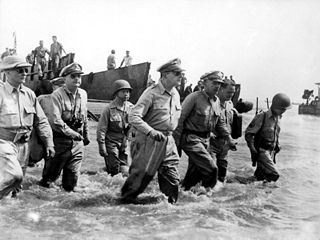
The Philippines campaign, Battle of the Philippines, Second Philippines campaign, or the Liberation of the Philippines, codenamed Operation Musketeer I, II, and III, was the American, Mexican, Australian and Filipino campaign to defeat and expel the Imperial Japanese forces occupying the Philippines during World War II.
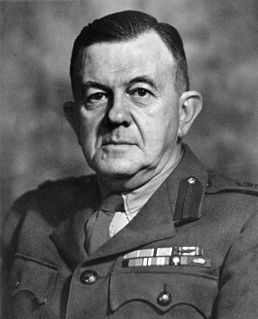
Brigadier Sir Neil Hamilton Fairley, was an Australian physician, medical scientist, and army officer who was instrumental in saving thousands of Allied lives from malaria and other diseases.
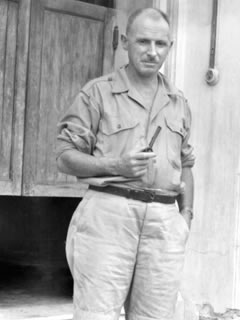
Sir Albert Ernest Coates OBE, FRCS (1895–1977) was an Australian surgeon and soldier. He served as a medical orderly in World War I serving on Gallipoli, and as a senior surgeon for the Australian Army Medical Corps in World War II in Malaya. He was captured by the Japanese and during his time as a POW, worked as a surgeon for the many Allied POWs working to build the Burma-Thailand Railway.
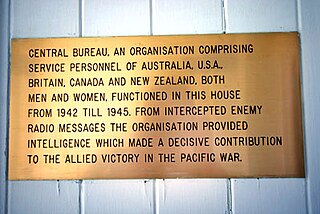
The Central Bureau was one of two Allied signals intelligence (SIGINT) organisations in the South West Pacific area (SWPA) during World War II. Central Bureau was attached to the headquarters of the Allied Commander of the South West Pacific area, Douglas MacArthur. Central Bureau's role was to research and decrypt intercepted Imperial Japanese Army traffic and work in close co-operation with other SIGINT centres in the USA, United Kingdom and India. Air activities included both army and navy air forces, as there was no independent Japanese Air Force.

Musgrove Park Hospital is a large NHS hospital located in Taunton, Somerset, England, run by Somerset NHS Foundation Trust. Originally a US Army General Hospital during the Second World War, it became an NHS hospital in 1951.
Fleet Radio Unit, Melbourne (FRUMEL) was a United States–Australian–British signals intelligence unit, founded in Melbourne, Australia, during World War II. It was one of two major Allied signals intelligence units called Fleet Radio Units in the Pacific theatres, the other being FRUPAC, in Hawaii. FRUMEL was a US Navy organisation, reporting directly to CiCPAC in Hawaii and the Chief of Naval Operations in Washington, and hence to the central cryptographic organization. The separate Central Bureau in Melbourne was attached to MacArthur's Allied South West Pacific Area command headquarters.
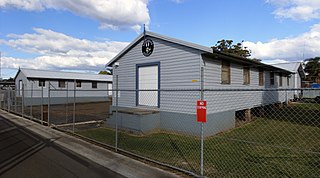
The 118th General Hospital was a U.S. Army military hospital built in 1942 at Riverwood, New South Wales. This was the largest military hospital in Australia, during World War II.

Major General Sir Samuel Roy Burston, was an Australian soldier, physician, and horse racing identity.
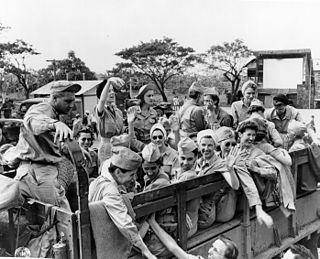
The Angels of Bataan were the members of the United States Army Nurse Corps and the United States Navy Nurse Corps who were stationed in the Philippines at the outset of the Pacific War and served during the Battle of the Philippines (1941–1942). When Bataan and Corregidor fell, 11 navy nurses, 66 army nurses, and 1 nurse-anesthetist were captured and imprisoned in and around Manila. They continued to serve as a nursing unit while prisoners of war. After years of hardship, they were finally liberated in February 1945.
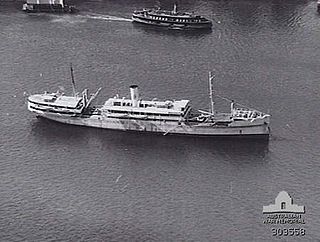
SS Mactan was launched 28 December 1898 as the passenger/cargo ship North Lyell for North Mount Lyell Copper Co.Ltd. intended for service between the west coast of Tasmania and Melbourne. The company no longer needed the ship on delivery in 1899 with resulting sale to Union Steamship Company of New Zealand Ltd. and renaming as Moura. In 1915 upon sale to the Douglas Steamship Company, Ltd. of Hong Kong she was renamed Hai Hong. Upon sale to Philippine operators in 1928 the ship gained the final name Mactan.
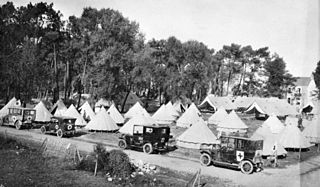
The Australian Voluntary Hospital was a military hospital staffed by Australian expatriates in England that served on the Western Front between 1914 and 1916. For most of the first year of the war, although not an Australian Army unit, it was an Australian presence on the Western Front.
The Royal Australian Air Force Nursing Service (RAAFNS) was a branch of the Royal Australian Air Force, which existed from 1940 to 1946, and from 1948 to 1977. Members served in World War II, the Korean War, the Malayan Emergency, and the Vietnam War.

Sir Thomas Peel Dunhill was an Australian thyroid surgeon and honorary surgeon to the monarchs of the United Kingdom.

During the Second World War, Allied logistics in Papua played a crucial role in bringing the Kokoda Track campaign to a successful conclusion. "The great problem of warfare in the Pacific", General Douglas MacArthur declared, "is to move forces into contact and maintain them. Victory is dependent upon solution to the logistic problem."
Sternberg General Hospital or Department Hospital, Manila P was a United States Military Hospital in Manila in the Philippines during the early part of the 20th century. The hospital was renamed after George Miller Sternberg on June 26, 1920.
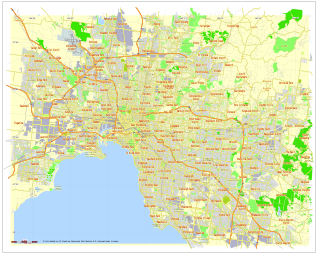
Naval Base Melbourne was a United States Navy base at Melbourne, Australia during World War II. Naval Base Melbourne became the South West Pacific Area Command Headquarters after the 1941 invasion of the Philippines. General Douglas MacArthur, after escaping the Philippines, set up his Headquarters after his arrival on March 21, 1942. MacArthur was appointed Supreme Commander of all Allied Forces in the South West Pacific Area. The US Navy also set up a Headquarters a Melbourne, Allied Naval Forces Southwest Pacific Area under Commander Vice Admiral Herbert F. Leary. MacArthur and Leary used the empty Trustees Executive building at 401 Collins Street, Melbourne for headquarters. The Port of Melbourne had good fleet anchorage and docks. A new naval base was built at Brisbane, Australia, Naval Base Brisbane, and the Headquarters was moved to Brisbane in July 1942.
References
Bibliography
- OzatWar website
- 60th Anniversary of US Army occupation of Royal Melbourne Hospital [ permanent dead link ]
- Unit History of the 4th General Hospital